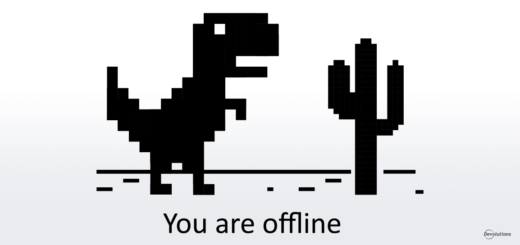Conditions of Railways in Indonesia and All the Realities
PT. Kereta Api Indonesia (KAI) Persero, is an Indonesian State Owned Enterprise that provides rail transportation services. In the service of PT. KAI itself includes both passenger and freight transportation.
Currently, the face of a train station in Indonesia is of course much different from before. Apart from maintaining cleanliness, various facilities are presented to make train passengers more comfortable while waiting for their train departure schedule at the station.
Railway Services in Indonesia
Currently PT. KAI itself is committed to continuing to provide a faster and better service for customers. Following are some of the services that have been provided by PT. Indonesian Railways!
1. Customer Service on Station Service Facility
PT. KAI currently has provided Customer Service on Station (CSOS) officers, later these officers will receive and help handle various complaints from customers at the station. If the complaint can be resolved by the CSOS officer, then the case will be closed or considered closed.
2. Healthcare Facilities
The next train station facility provided is a health service. If you experience an injury while at the train station, whether it’s a minor or serious injury, of course, it will require fast and appropriate treatment. So, you don’t need to look for medicine at the pharmacy or go straight to the hospital. This is because you can get first aid at the KAI health service.
3. Clean Toilet Service Facility
Currently, Indonesian Railroad has provided clean and comfortable toilets as a form of service to customers. In fact, cleaning staff routinely carry out mobile cleaning and inspection every day. This aims to ensure that the toilet area is kept clean, not slippery, dry, fragrant and there are no stagnant water. In addition, so that customers feel comfortable when in the toilet.
4. Nursing Room Service Facility
PT. It turns out that Indonesian Railways currently has provided a breastfeeding room for mothers who bring babies or toddlers at the station. This is because the provision of the room is to provide privacy for mothers while breastfeeding their children. In fact, the facilities provided in the room are complete, such as sofas, wardrobes, sinks and also air conditioners to provide cool air for babies and their mothers.
5. Mosque/Mushola Service Facilities
For Muslims, of course, the five daily prayers are an obligation that must be performed every day. Therefore, KAI has also provided a mosque/mushola in the train station area. The reason is, this is so that all customers can carry out prayer services comfortably and quietly.
Train Accident in Indonesia
A train accident is an incident that occurs on a train, for example a collision between trains, derailed, overturned or caught fire. The following are Indonesian train accidents, including:
1. Bintaro Train Accident
The train transportation accident which is considered as the most tragic accident in Indonesia, is the bintaro tragedy. This is because this tragedy involved 2 train units, the first train departed from Rangkasbitung, then the second train departed from Tanah Abang Station. As a result of a communication error, in the end the two trains collided with each other at Pondok Betung, Bintaro.
2. The Empu Jaya Train Accident and the Gaya Baru Malam Train
On December 25, 2001, there was an accident on the Empu Jaya train which crashed into the Gaya Baru Malam train that was waiting for the crossing at the Brebes Reliability Station. The accident also killed 45 people. The accident was purely human error.Rail Tracks in Indonesia
The Indonesian Railway (KAI) route itself, has been divided into several operational areas (Daop) and covers several surrounding areas. There are quite a lot of railroad lines in Indonesia, which are spread across the islands of Java, Sumatra, Sulawesi and Papua
Java Island has the longest railway line in Indonesia, which is 4,536.51 km. The details cover the areas of Jakarta and Banten, which are 889.6 km long, West Java, which is 960.58 km, Central Java 1,599.8 km, and East Java 1,086.56 km.
The railway line that is still active and the second longest after Java Island is on Sumatra Island with a length of 1,854.41 km. The line consists of northern Sumatra with a length of 716.8 km, western Sumatra 228.3 km, and southern Sumatra 909.3 km. Furthermore, there is a railway line in Sulawesi which is still active with a length of 49.3 km. Meanwhile, in Papua, the active railway line is 26 km long.
The number and length of railway lines in Indonesia does not rule out the possibility of accidents. Especially also traffic accidents between pedestrians which can be motorized vehicles or pedestrians.
Lots of traffic accidents involving pedestrians and trains. This is because there are still most of the trains that have not been installed at various points. However, the large number of accidents eventually forced the government to install crossbars at points where people are crossing or connecting large areas. Accidents also occur due to the indiscipline of motorized vehicle drivers or pedestrians. They sometimes take shortcuts by crossing at points where there are no bars because they feel the distance will be closer. Of course this is very dangerous, considering that there are so many train accidents that can take someone’s life.
There are still many accidents that occur even though the overpass system already exists at certain points, it is better if there are steps that need to be taken by the government. Namely by closing the train line. For train lines that intersect with major roads or connect between regions, bridges can be made to reduce the intensity of accidents that occur.
If the train line is closed, there will be very little chance of an accident occurring. In addition, it can reduce the danger of a train passing by. This also prevents people from being able to pass at a point where there is no barrier due to their indiscipline.
The Government of Indonesia together with PT. Kereta Api Indonesia can jointly devise solutions to prevent train accidents with motorized vehicle drivers or pedestrians so that tragic accidents do not recur as before. This is also to avoid material losses for both trains and motorized vehicle drivers or pedestrians.



